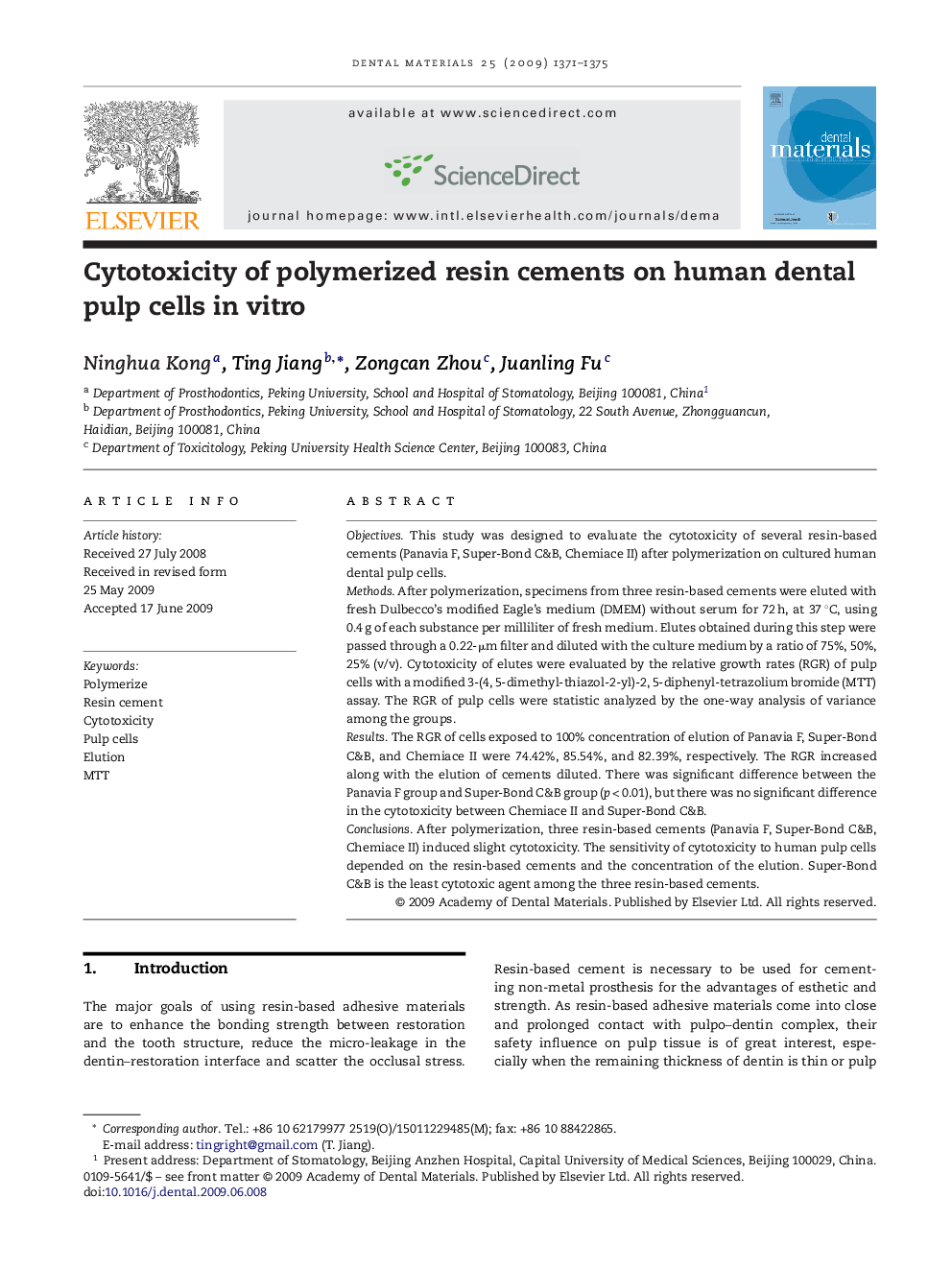| Article ID | Journal | Published Year | Pages | File Type |
|---|---|---|---|---|
| 1422937 | Dental Materials | 2009 | 5 Pages |
ObjectivesThis study was designed to evaluate the cytotoxicity of several resin-based cements (Panavia F, Super-Bond C&B, Chemiace II) after polymerization on cultured human dental pulp cells.MethodsAfter polymerization, specimens from three resin-based cements were eluted with fresh Dulbecco's modified Eagle's medium (DMEM) without serum for 72 h, at 37 °C, using 0.4 g of each substance per milliliter of fresh medium. Elutes obtained during this step were passed through a 0.22-μm filter and diluted with the culture medium by a ratio of 75%, 50%, 25% (v/v). Cytotoxicity of elutes were evaluated by the relative growth rates (RGR) of pulp cells with a modified 3-(4, 5-dimethyl-thiazol-2-yl)-2, 5-diphenyl-tetrazolium bromide (MTT) assay. The RGR of pulp cells were statistic analyzed by the one-way analysis of variance among the groups.ResultsThe RGR of cells exposed to 100% concentration of elution of Panavia F, Super-Bond C&B, and Chemiace II were 74.42%, 85.54%, and 82.39%, respectively. The RGR increased along with the elution of cements diluted. There was significant difference between the Panavia F group and Super-Bond C&B group (p < 0.01), but there was no significant difference in the cytotoxicity between Chemiace II and Super-Bond C&B.ConclusionsAfter polymerization, three resin-based cements (Panavia F, Super-Bond C&B, Chemiace II) induced slight cytotoxicity. The sensitivity of cytotoxicity to human pulp cells depended on the resin-based cements and the concentration of the elution. Super-Bond C&B is the least cytotoxic agent among the three resin-based cements.
